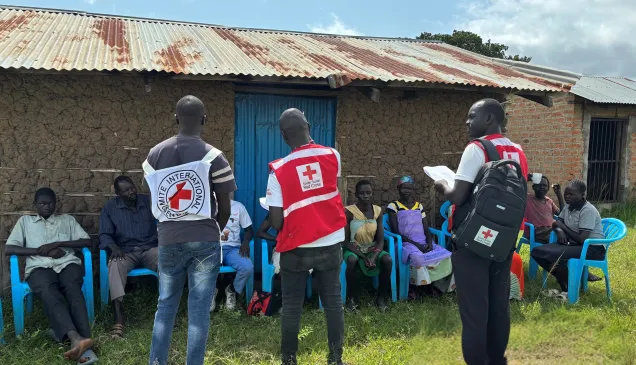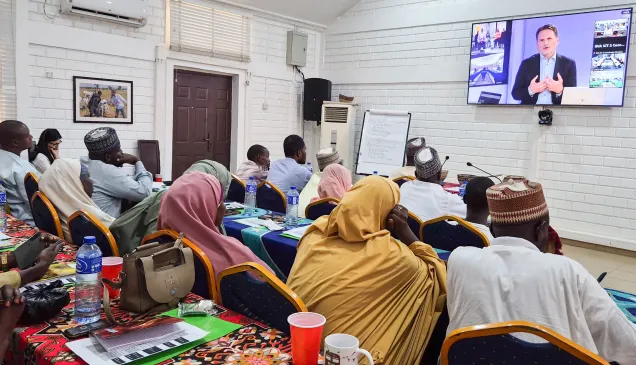Sa’adi, a 30-year-old farmer, is the mother of four-month-old Abubakar Husseini. Following the birth of her son, she had to take care of her three other children and was not producing enough milk to breastfeed the newborn. “I was so worried to see that my baby was not growing as he should,” she said.
Nigeria: The important role of mothers in treating malnutrition in children
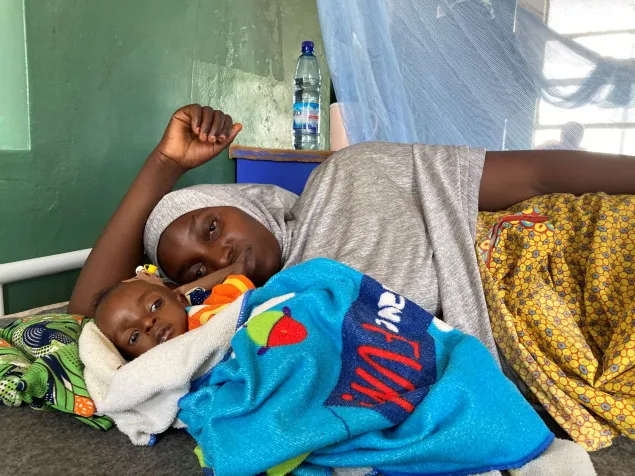
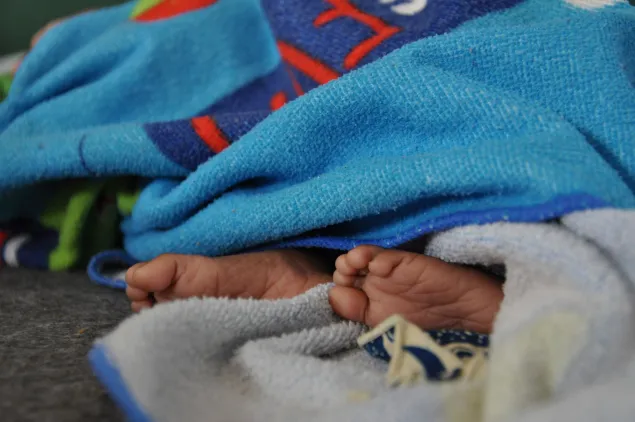
Abubakar Husseini was born in Munduva, in Southern Mubi. His mother, Sa'adi was advised by her family to take him to the stabilization center because he was looking too skinny. “I strongly encourage other mothers to come here as soon as possible,” she said, “I am so happy to see him getting better, he is my blessing."
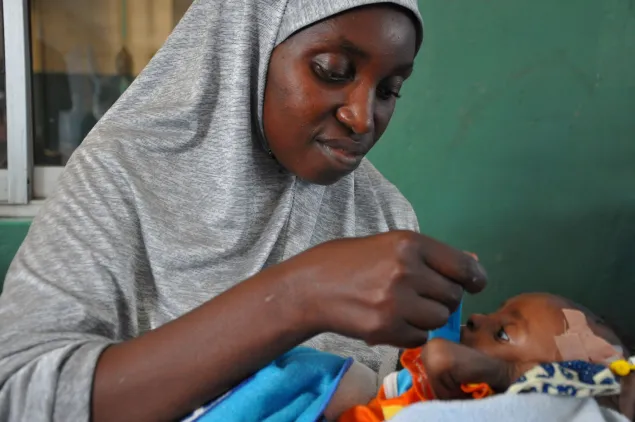
Abubakar Husseini and his mother will leave the stabilization center soon. “We don’t know when exactly, but the doctor is optimistic,” Sa'adi said.
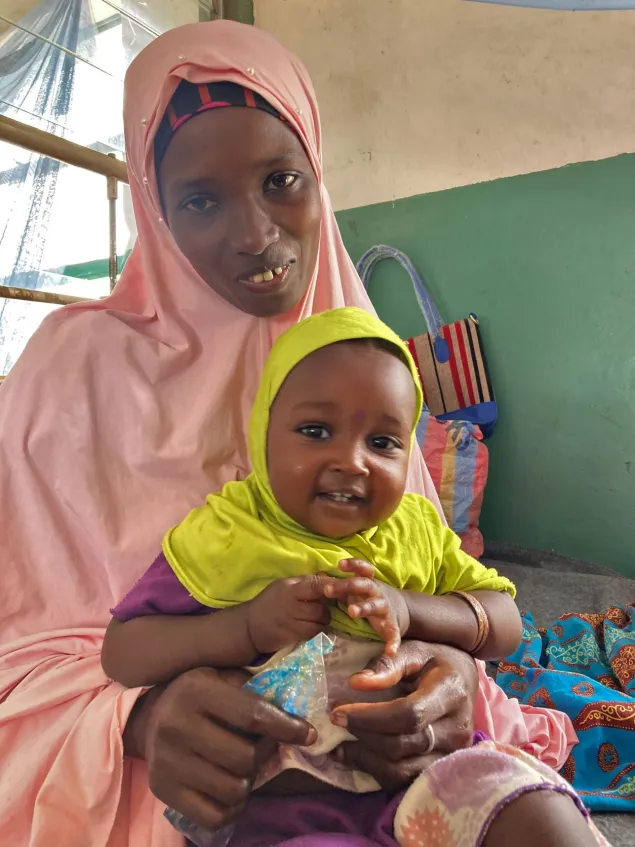
Khadidja, Hauwa’s youngest daughter is 13 months old. She is waiting for her little uncle, Salisu, to get better. “I care about my grandchildren as much as my children,” said Hauwa. Having a daughter who is only a year older than her grandson, Hauwa is the one who breastfeeds him when his mom is away.
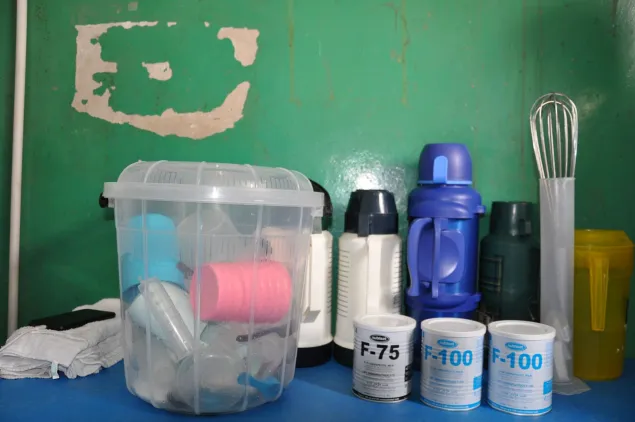
F-75 milk is used during the initial treatment of malnutrition, beginning as soon as the child arrives. It continues for two to seven days or until the child is stabilized. As soon as he is stabilized, the child starts taking F-100 milk, which contains more protein and calories.
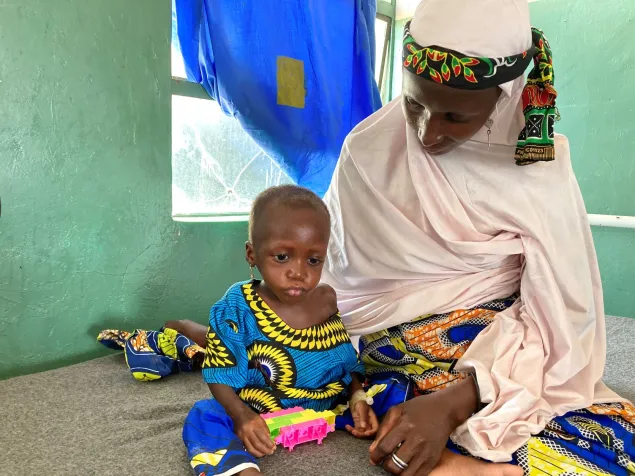
Hajara Adamu came all the way from Askira town, in Borno State, more than two hours’ drive from Mubi, to treat her two-year-old daughter. “When I stopped breastfeeding Ladi, she got very sick,” said Hajara “We tried everything: hospitals, clinics and even traditional healing. Nothing worked."
After 18 days in the stabilization center, Ladi is now eating by herself and playing again.
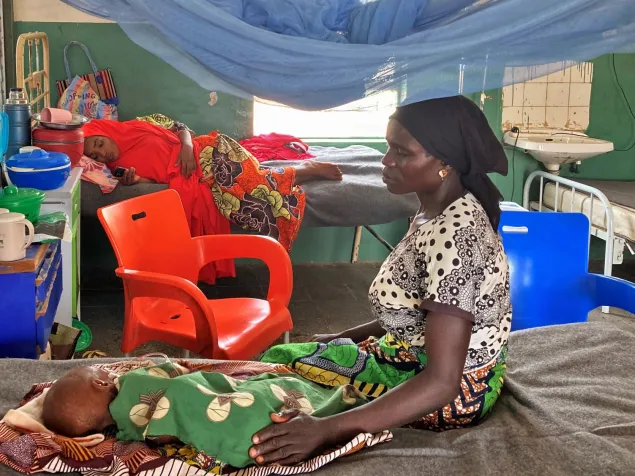
Hannatu is Hima’s grandmother. At one year and seven months, Hima weighs 70 per cent less than the average weight of children his age. His mom stopped lactating and breastfeeding when she got pregnant again, while Hima could not feed himself. “We were told that it may be evil spirits, so we tried traditional herbs and medicine,” recalls his grandmother. “We fed him with noodles and porridge, but his condition kept getting worse.”
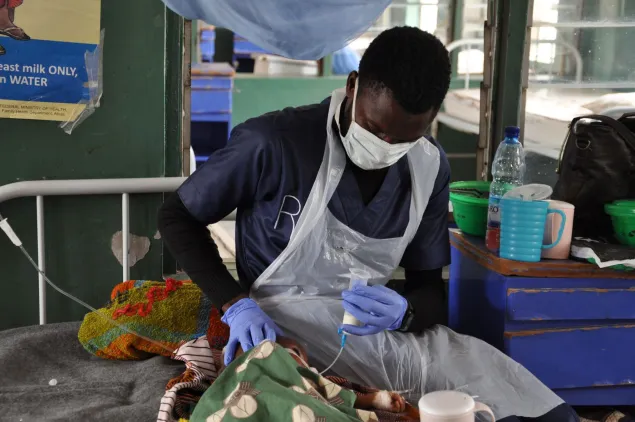
Hima is the newest patient at the center. “I observe some improvement and I have hope. He is moving his hand again,” said his grandmother Hannatu.
Between January and June 2021, more than 5,400 children under five years with malnutrition received nutrition treatment by the ICRC. Malnutrition among children under five years is due to several causes some of which can be addressed by their parents. However, poor access to health care, deteriorating food security, and lack of knowledge are among many obstacles parents, especially mothers, in the north-east of Nigeria face.
The ongoing conflict, which has lasted for over a decade, has negatively impacted the overall health situation in the region, and particularly that of children. When mothers make critical decisions to save the lives of their malnourished children, they must take many things into consideration, but does this stop them? No. To ease some of these obstacles, the ICRC supports a new stabilization center in Mubi that can treat up to 15 malnutrition children under the age of five at a time with their families.
By using ALMANACH, a digital tool that improves the quality of diagnoses and drug prescriptions for children under five, health care workers screened and detected a rise in cases of malnourished children in Adamawa State. In response, the ICRC has partnered with the General Hospital in Mubi, in April 2021, to support the most vulnerable children.
The images here were taken at the stabilization center in Mubi, the second ICRC-supported stabilization center in the country, in partnership with General Hospital, Mubi.

